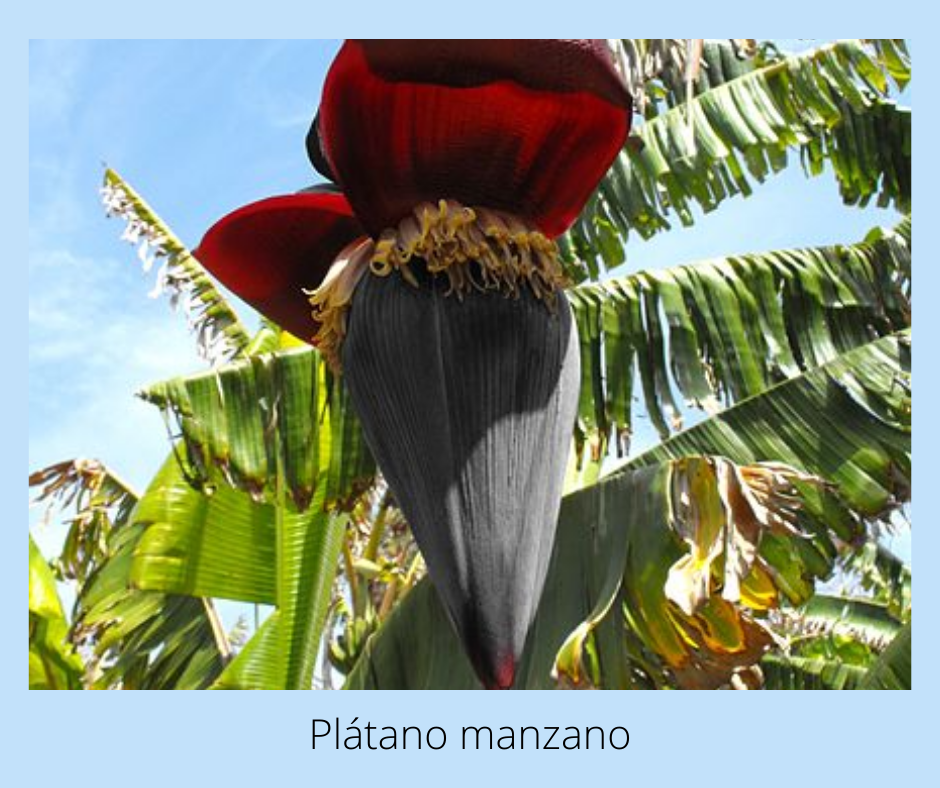
Did you know that eight plátano varities are cultivated in Mexico? EIGHT! Plátano morado or malayo (Musa acuminata), plátano tabasco (Musa × paradisiaca), plátano largo (Musa paradisiaca var. baldisiana), plátano guineo (Musa balbisiana), plátano manzano (Musa sapientum), plátano de bolsa (Musa paradisiaca var. reticulata), plátano dominico (Musa paradisiaca var. sapientum), and the Plátano roatán (Musa paradisiaca var. cavendish). Names are complex and confusing since the hybridization process has created between 300 and 1000 varieties of bananas and plantains.
Bananas were originally cultivated in Southeast Asia. Many historians believe that bishop Vasco de Quiroga brought the first rootstocks to Mexico from Santo Domingo in 1554. In Mexican herbalism, plátanos are considered “cold” and should be avoided in the treatment of “hot” ailments such as dolores de ijar (menstrual cramps).
Plátano cultivation is taken seriously. In Tabasco, Ch’ol farmers are particular about the soil where plátano is grown. The preferred environment is made up of black or sandy soils. Musa paradisiaca, a type of plantain, is the variety whose leaves are used in tamale preparation, and the fruit is typically boiled or deep-fried before serving.
The air-dried leaves and cluster stems of the plátano manzano, known as Ja’as in Mayan, are used in remedies for tuberculosis (peste blanca). Studies have shown that the Musa acuminata variety at least presents antimycobacterial activity supporting its use in TB treatments. In some areas, a poultice is made from mashed, ripe bananas and applied to the back and chest of a person with pneumonia.
You might remember that when Joey impaled himself on the fence, the vet mushed an entire banana into the wound to aid in recovery. Well, seems there is something to that after all.
Plátano peels are used to promote wound healing. For external skin infections, a still-green peel is set out to dry and then wrapped on the wound area as a poultice. For dry skin, a mask or poultice is made from the fruit. For itchy mosquito bites, the underside of the peel is rubbed on the skin. Other common uses include as an aid to treat constipation, urinary tract infections, breathing difficulties, and nervous system ailments.
A concoction for alcoholics involves boiling coconut water from two coconuts (Cocos nucifera) in a new clay pot and the peels from five plátanos. Add piloncillo and steep it all for three days. Every morning for nine consecutive days, this drink is served with a dash of alcohol to discourage overindulgence.
A tea made for insomnia is made by boiling one plátano (with peel) and canela stick (Cinnamomum zeylanicum) for 15 minutes in a liter of water. Strain and add miel (honey) to taste.
Thus, it should come as no surprise that plátanos are an excellent addition to a healthy diet. The antioxidants found in this sweet fruit show promise in the treatment of Parkinson’s disease. Its dopamine content reduces the severity of depression. It’s also antimicrobial, antibacterial, and antifungal. Regular ingestion has shown to be cell-protective, providing an anti-cancer effect. Banana starch as part of a regular diet promotes healthy weight loss. More specifically, the variety musa sapientum has been found to be anti-hyperglycemic.
***
Interested in natural remedies? Uncover herbal remedies from traditional Mexican sources for healing and wellness in the Exploring Traditional Herbal Remedies in Mexico series.





































